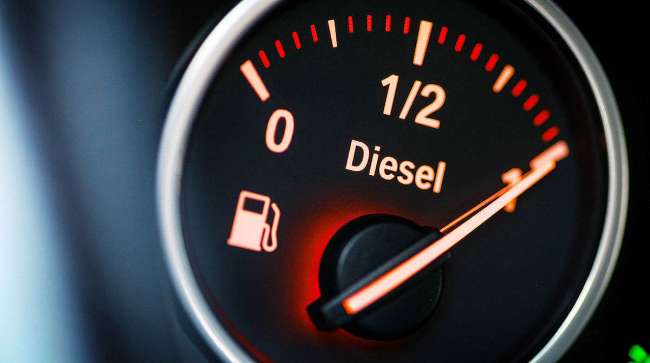Senior Reporter
Diesel Rises 2.8¢ for Third Consecutive Weekly Gain

The U.S. average retail price of diesel rose 2.8 cents to $3.076 a gallon, according to the Department of Energy, as crude prices inched higher.
The national average price of diesel is 8.4 cents more than it was a year ago, when the price was $2.992, DOE said after its March 4 survey of fueling stations.
It was the third consecutive rise in the average weekly diesel price.
At the same time, the average prices for diesel rose in every region.
Additionally, the U.S. regular gasoline average price rose 3.2 cents to $2.422 a gallon, 13.8 cents lower than a year ago, DOE’s Energy Information Administration said.
Gasoline production increased for the week ending March 1, averaging 9.9 million barrels per day.
Production of distillate fuel — primarily ultra-low sulfur diesel used in transportation and to a lesser degree as heating oil — increased last week, averaging 4.9 million barrels per day.
Crude futures on the New York Mercantile Exchange closed March 6 at $56.22 per barrel compared with $55.16 on Feb. 25.

Meanwhile, one large third-party logistics company finds itself wearing many hats when it comes to managing fuel for its customers and itself, an executive said.
“Managing fuel is naturally a challenge, but there is no real secret sauce to it. Everyone wants to get the best fuel price and the most beneficial tax rate depending on which state you fuel in,” Tom Poduch, senior director of logistic design and technology at Transervice Logistics Inc., told Transport Topics.
Transervice manages about 24,000 pieces of commercial equipment, including gasoline-powered utility vehicles, through diesel-powered over-the-road Class 8s as well as trailers and others.
One of its customers owns the vehicles but Transervice employees drive, maintain and fuel them, and the customer pays for the fuel, he said.

Poduch
Transervice does linehaul work for another customer using its own drivers, equipment and fuel.
For another full-service lease customer, the customer purchases its own fuel “but we try to assist them with that decision,” Poduch said.
“We are involved in it on many, many different levels from recommendations to engineering the program to physical purchasing,” he said.
The way you handle it, or at least monitor it, is with technology, he added, including integrating with customers’ vehicle and back-office technologies. “You have to find a solid set of intermediary companies that can really crunch that data and streamline it into a singular portal as much as possible.”
Mixing in feedback from operations and the drivers completes that picture, he said.
Trucks broadcast more and more information every day, as do the drivers, he said. Each one of its customers asks for more information, “so the lake of data is growing exponentially. And that won’t ever stop. It is just going to continue to grow.”
Transervice reported 1,176,700 gallons of fuel on its IFTA report for the last quarter of 2018.
“This still may not be reflective of all fuel consumed as in some locations it is client provided, but it should be a good estimate,” Poduch said.
As for environmental sustainability, the company’s customers are very much interested in it, not only for how it portrays their public image but it also is the right thing to do, he said.
“We are getting more and more interest in it,” he said. “And there is not one major vehicle manufacturer that is not already investing, deploying or ready to deploy a test vehicle to convert to electric, hydrogen or an alternative sustainable fuel source.”
U.S. average #diesel fuel price on 3/04/19 was $3.076/gal, UP 2.8¢/gallon from 2/25/19, UP 8.4¢/gallon from year ago https://t.co/PEoxxbG5WF #truckers #shippers #fuelprices pic.twitter.com/n9qDKbvIBc — EIA (@EIAgov) March 5, 2019
In related news, U.S. commercial crude oil inventories, excluding those in the Strategic Petroleum Reserve, increased by 7.1 million barrels from the previous week. At 452.9 million barrels, U.S. crude oil inventories are about 4% above the five year average for this time of year, EIA reported.
That pushed past analysts’ expectation for a 1.45 million barrel increase.
Refineries operated at 87.5% of their operable capacity for the week ending March 1.
Bloomberg News reported Chinese travelers are forgoing the open road in favor of trains while making the switch to electric cars, which means the top driver of the world’s oil demand may soon step on the brakes, according to Morgan Stanley.
“I’m skeptical about oil’s short-term ability to hold onto current levels,” Ole Sloth Hansen, head of commodity strategy at Saxo Bank A/S in Copenhagen, told Bloomberg. “The demand outlook may get downgraded, equities are failing to break resistance, and the trade talks are priced in and can only disappoint.”


